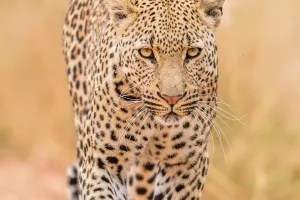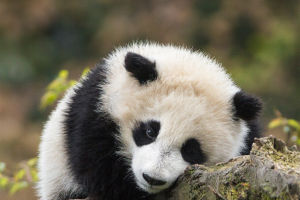The word panda was originally the exclusive title of the early zoologists for the red panda. However, the giant panda was born. In the end, the two shared the title of panda equally. The black and white one is called the giant panda, and the red one is called the red panda. After that, the giant panda became China's national treasure, and the red panda was not too bad. They are second-class protected animals. However, the situation of wild red pandas is completely inferior to that of giant pandas, and even almost endangered!
The history of the red panda is very ancient, no less than the living fossil level of the giant panda. It first appeared about 7 million years ago. They originally spread across the Eurasian continent, but due to environmental changes, they were finally distributed only in the Himalayas.
The habitat of red pandas overlaps with that of giant pandas, but the two are not in competition as a whole. Although the red panda also eats bamboo, its bite force is not as strong as that of the giant panda, so it can only eat some tender bamboo and bamboo shoots. Red pandas have retractable claws and can climb trees.
They are much smaller than giant pandas, weighing only about 5 kilograms. They often live in tree cavities and rock crevices, come out in the morning and evening, and sleep during the day. Red panda fur is their protective color in the wild, but in the eyes of humans it is a luxurious fur.
If the giant panda's road to becoming a national treasure is a bloody hunting history, then the red panda is no exception. The size of the red panda allows its fur to be fashioned into a scarf just right, or a hat with a tail. Therefore, the hunting of red pandas has existed since ancient times. Many businessmen even value the prospect of red pandas as pets, catching live red pandas in China, Nepal and other places, disguised as puppies and transporting them to European and American countries.
The red panda is an alpine animal, and its living environment is not higher than 25 degrees Celsius, and their thick hair can't stand the heat. Red pandas transported to Europe need to follow ships from the Strait of Malacca through the Bay of Bengal to cross the equator. The temperature is getting hotter and hotter, and many red pandas died on the way. These dead red pandas will be skinned. In short, it has a certain value whether it is alive or dead, and it is not a loss to transport it. Cuteness has become the "sin" of the red panda.
Now, although there are no fur and pet traders to sell red pandas, human activities still affect the red pandas. Because the reclaimed land occupies the habitat of the red panda, like the giant panda, its living area is divided into several "isolated islands", resulting in inbreeding of the red pandas in these areas, and the population is extremely unhealthy.
The giant panda has become a national treasure because of its antiquity and speciality, and is protected by artificial captivity, but at this time, people seem to have forgotten about the red panda. By the time humans look back on protecting them, the number of red pandas in the wild has dropped by 40 percent.
Red pandas have stronger reproductive capacity than giant pandas, because their children are not born prematurely, but are born at full-term. Each time there are 2 to 3 litters, and occasionally 4, they can basically survive. Red panda cubs are grey to protect them from predators. It only takes a year for the cubs to leave their mothers, so red pandas can participate in breeding every year. Therefore, as long as humans do not disturb the life of wild red pandas too much, their populations can recover quickly.
Because of their super reproductive ability, there are currently about 10,000 red pandas in the wild, distributed in China, Bhutan, India, Myanmar and Nepal. Protecting red pandas is not only to protect an ancient species and maintain biological diversity, but also to protect the alpine ecology. The red panda eats fruit, but cannot digest the seeds of the fruit.
The range of a red panda can reach dozens of square kilometers, which is conducive to the spread of fruit. The red panda lives at an altitude of 2500-4800 meters, and it is the main seeder in deciduous and coniferous forests. If the red panda goes extinct, the local environment will suffer a huge impact.


